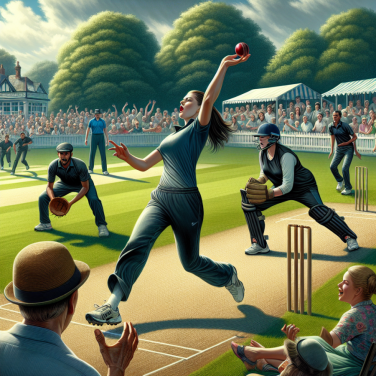The Thrill and Adrenaline Rush of Skate Racing
Skate racing is no ordinary sport; it’s a fusion of speed, precision, rhythm and a whole lot of adrenaline. Reaching high speeds on two lines of wheels can provide a unique thrill that’s hard to match in any other activity. Whether it's down a highway or track, the thrill of surging forward with every push is one of the things that makes skate racing so exciting and keeps racers coming back for more.
An essential aspect of skate racing is the adrenaline rush, which can be attributed to the inherent nature of the sport. Skate racing is a high-speed contest where participants are required to maneuver themselves on a pair of roller skates while pushing their bodies to the limit. This adrenaline-fueled activity demands a high level of determination and concentration, which only adds to the thrill and exhilaration experienced by participants.
One of the primary contributors to this adrenaline rush is the element of risk and unpredictability involved in skate racing. Just like any other racing sport, competitors need to navigate through sharp turns, high-speed straight paths, and overcome various other obstacles throughout the race. Furthermore, the opportunity to explore the limits of personal skill and endurance also adds to the thrill.
Skate racing also appeals to adventure seekers who crave for the thrill of speed. The sensation is comparable to that of motor racing, where racers feel the wind rushing past their ears, and the heart-pounding exhilaration as they surpass other skaters on the track, albeit with a direct physical engagement missing in motor sports. This fearless pursuit of speed can give racers an invigorating sense of freedom and thrill which is exclusive to skate racing.
But skate racing is not just about the thrill – it is also a test of stamina and skill, requiring significant physical strength. Racers must maintain balance on their skates while propelling forward at high speeds. It takes a combination of leg strength and cardio endurance to uphold such speeds for long durations.
Apart from the physical aspects, mental prowess also plays a pivotal role in skate racing. Racers have to possess a strong mental fortitude to make quick decisions while travelling at high speeds. The ability to analyse the track, gauge the other racers and adjusting their strategy mid-race requires quick thinking and flexibility.
Read also:
Unveiling the Earnings: A Comprehensive Look at Soccer Players' Salaries in South Africa
Techniques and Tips for Becoming a Pro Skate Racer
Skate racing is a fascinating extreme sport that mixes the thrill of speed with skillful agility and balance. It's a sport that requires technical know-how, physical strength, and intentional practice. To help you maneuver through the twists and turns of becoming a pro skate racer, here are some expert techniques and tips.
The first crucial technique for any skate racer is mastering the basic skills. These include everything from simply standing on skates, to moving forward and backwards, turns, and stopping. Once these basics are forged into your muscle memory, more advanced techniques become easier to learn. It’s essential to perfect these foundational basics before attempting any advanced techniques or tricks, as they form the basic framework for all skate racing maneuvers.
Besides mastering the basics, a future pro skate racer needs to learn about the gear. Knowing the parts of your skating gear, like understanding the differences between varying wheel hardness and sizes, can make a significant impact on your performance. Changing weather conditions and the nature of different terrains require different types of wheels. It's crucial to have the right gear that suits your style and the conditions that you're skating in.
Then comes a very challenging part - mastering balance. Maintaining balance on skates is a crucial skill to have in skate racing. This skill is closely related to the central core and lower body strength. Introducing specific workouts focusing on these areas can help improve your balance. Yoga, Pilates, or even basic gym workouts aiming to engage the core muscles can be advantageous.
Another point to focus on is building speed. Many factors affect your speed, including your posture and stride. Good posture decreases air resistance, enabling you to move faster. Your stride reflects how you push off the ground when moving. A correct, confident stride can help you maintain your speed without losing balance. Plyometric exercises such as jump squats, box jumps, or even skipping rope overall can improve your stride and speed.
Endurance is an aspect commonly overlooked during training. As a pro skater, you’ll be participating in races that go on for many miles, which requires a great deal of stamina. Cardio workouts can go a long way in helping build your endurance level.
Finally, don't underestimate the importance of studying other skaters. Watching professionals can help you understand strategies they use during races, what techniques they use when they approach turns, how they recover from stumbles, and so on.




